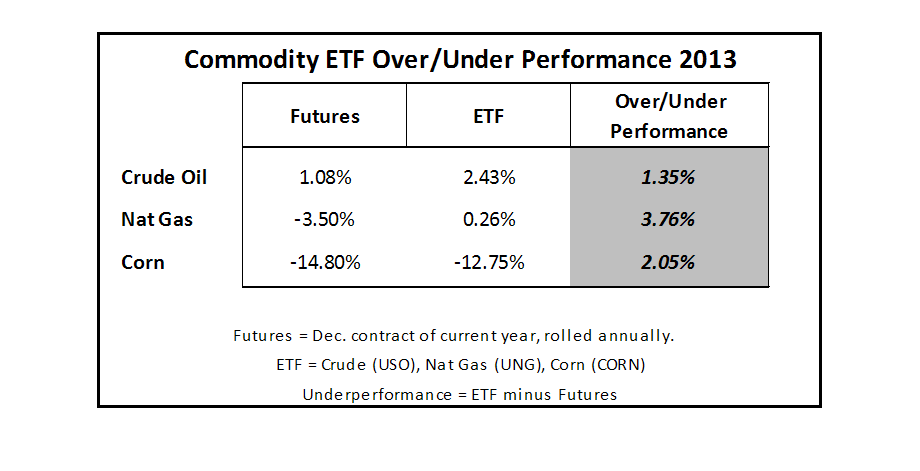Trading Commodity ETFs versus Commodity Futures
Post on: 15 Апрель, 2015 No Comment

Commodity ETFs traders are prone to creating their own gauges for indexes which may include just metals, agricultural products or natural resources. This is largely why we have them track error surrounding commodity indexes like the DJ AIG Commodity Index. The rise in popularity of commodity ETFs is largely due to increased exposure that investors get without knowing how to trade futures. Investors buy and sell commodity ETFs on an exchange just as seen in stocks, thus giving them incredible access and simplicity.
Commodity futures entails having an order that allows trading commodity at a given date in the future and at a definitive price. Commodity prices are known to change on a daily, weekly or even monthly basis, just like the price of grain changes at the grocery store. Speculators are in the habit of bidding higher the prices of commodity for profit purposes, and the propensity becomes greater when in crisis and shortages are being predicted.
Spot the Difference
For ETF traders that wish to buy $20,000 worth of GLD, you’ll be required to place the entire $20,000. As a matter of fact, if you require control of 3,000 ounces of gold, you’ll only be required to place the required margin money. This is usually around one-tenth of the contract value, thus the investor is able to allocate the remaining one-ninth of his equity on other money making ventures.
Another big difference between trading commodity ETFs and commodity futures is that you can easily spot the underwriters on ETFs, as well as the primary holders, along with their definitive intent and expense ratios. Commodity futures have weekly reports tagged Commitments of Traders Report that’s published by the CFTC, offering information on net changes of producers along with end users of such commodities.
My convictions are that end users and suppliers are the ones with good background knowledge of the true values of the markets. The aforementioned weekly report enables you make inferences on the producer’s thoughts on best prices being seen. It has remained a crucial piece of information that a lot of folks are not aware of.
When trading commodity ETFs there’re some complexities that are being withheld from you on the front end. In some instances when you hold basket ETFs, you’re invariably in possession of various things. On the other hand, having commodity futures means you’re just holding the commodity.
The price of a specific commodity can be tracked via commodity ETFs, making them a great pick for traders who believe that certain commodity can either be overvalued at the instance or undervalued. For instance if the current slide in crude oil prices is seen as being unsustainably low, then you can basically have oil-related ETFs, usually coming in the form of undiluted oil ETFs or conglomerate of oil-related ETFs and trade them until such prices touches the forecasted levels.
Commodity futures on the other hand do pose a lot of risks especially for newbie traders. Just as I’ve mentioned earlier, the huge leverage is the main cause of this risk. If a trader gets an initial margin of $5,000, the trader is able to initiate a futures contract of 2,000 barrels of oil that has a market worth of $65,000. Considering the huge leverage, the market could trigger big gains or losses in the face of small price changes when compared to the startup margin. Commodity futures are generally an order for the purchase or sale of the underlying asset. By not closing live positions, one that’s inexperienced can possibly take custody of huge quantity of commodity that’s not needed.














